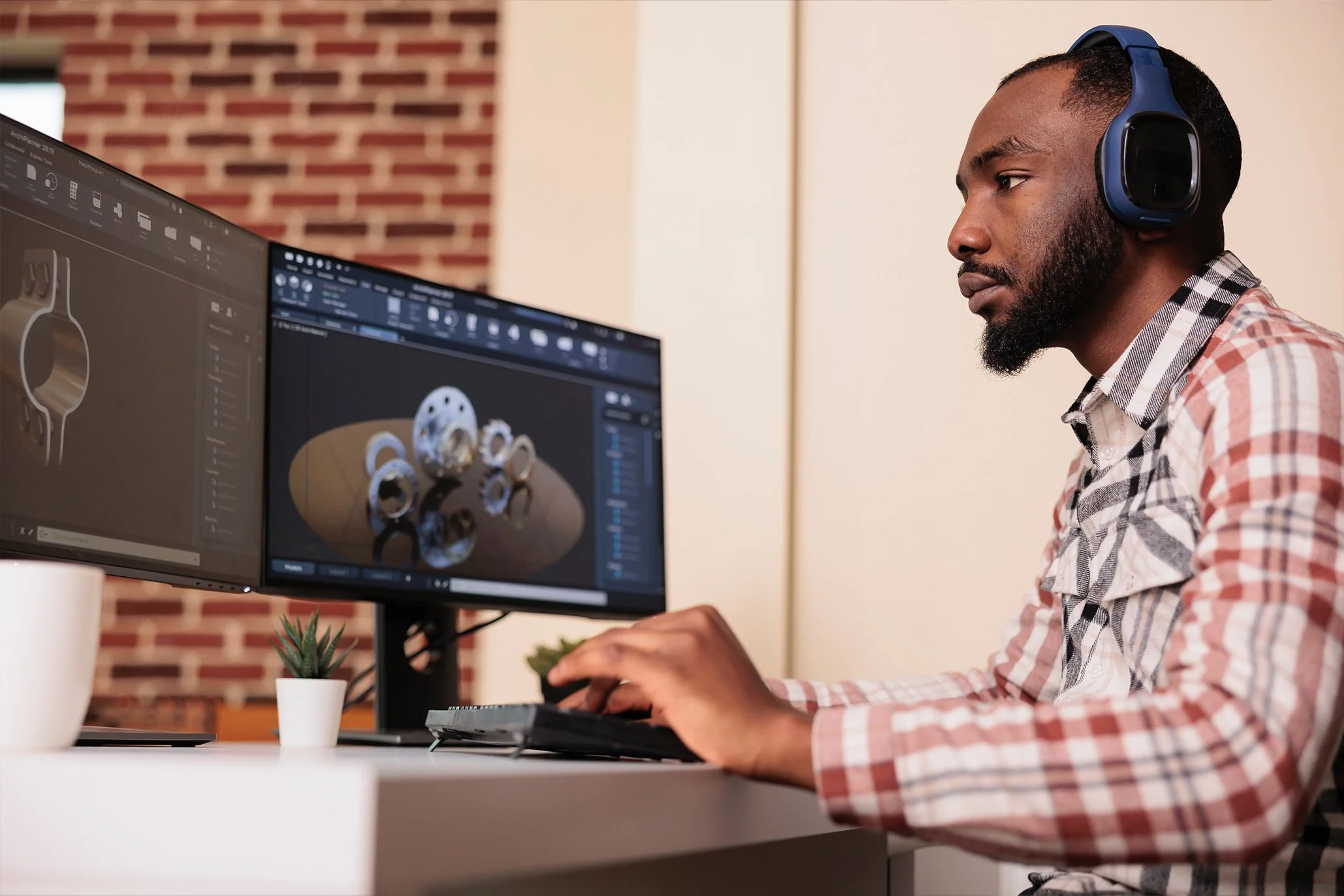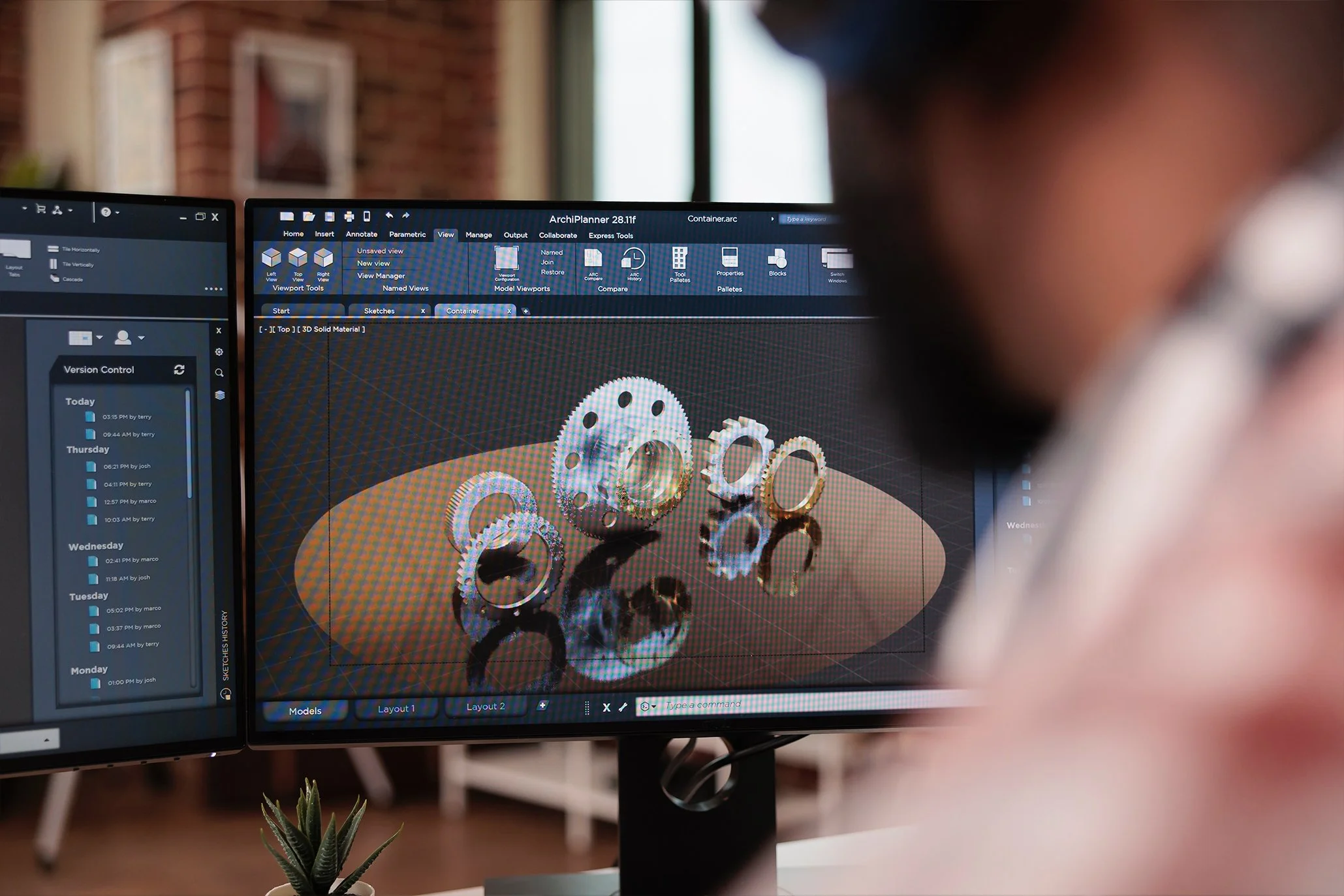Sketch It and Build It: Product Design Tools that Make Consumer Goods
Industrial design is a discipline that sits at the intersection of creativity, technology, and engineering, so product design tools must be versatile and varied. This form of design is a complex process that involves conceiving and producing tangible goods for mass production and commercial use. From ideation to execution, the product development process at Avail Creative encompasses multiple phases, including research, design, and prototyping. Each stage demands a unique set of tools and methodologies that ensure the quality and effectiveness of the product.
Phase 1: Research
The research stage is the first and often considered most critical product development phase. This phase sets the foundation upon which a successful product is built. A well-versed industrial designer knows the importance of effective research and utilizes various product design tools to get a grip on market trends, user behavior, and competitor products.
Market Research Tools: Comprehensive market research is the starting point of the design process. Industrial designers use sophisticated online survey tools like SurveyMonkey and Google Forms to collect targeted data about customer preferences. Here at Avail Creative, we also use analytical tools like Google Analytics, SEMRush, or SimilarWeb better to understand the potential user demographic and competitive landscape.
Interviews and Observation: The power of direct user interaction is often invaluable. User experience will inform design decisions throughout the development cycle. Trained industrial designers leverage communication and observational skills to draw insights from product interactions.
Persona Building Tools: Tools like Xtensio can be employed to create user personas that embody the needs and behaviors of the target audience. Trained designers know that a well-constructed persona can be instrumental in informing the design process and achieving a product that truly resonates with its users.
Example: Consider the creation of a new ergonomic office chair. At this stage, our industrial designers would utilize analytic tools to understand the demographic that spends significant time sitting in an office chair at work. We might use SurveyMonkey to survey users' issues with existing office chairs in traditional and home office settings. Competitor products are examined using tools like SimilarWeb. Interviews and observation could also be conducted, maybe at office spaces, to note user behavior and challenges firsthand. Our design team can also create user personas representing different types of office workers. The data collected using these product design tools is vital to guide the design process and produce a product that truly caters to users' needs.
Phase 2: Design
With a solid research foundation in place, industrial designers turn to the second phase: design. During this phase, various product design tools are employed to translate the insights garnered from research into design decisions.
Sketching Tools: Industrial designers are trained to transform their ideas into design sketches. A few of our designers prefer traditional tools like paper and pencil, but we also utilize digital sketching tools like Sketchbook Pro in various cases.
CAD Software: Computer-aided design tools, like SolidWorks or Rhino, allow our designers to develop detailed 2D and 3D product models. These tools, coupled with the industrial designer's expertise, facilitate the creation of products that seamlessly blend aesthetics and functionality.
Rendering Software: To help visualize and communicate our design concepts, our designers use rendering tools like KeyShot. These applications enable the creation of photorealistic representations that can be essential for presentations and sales and marketing efforts.
Example: Returning to our office chair design, our industrial design team starts with a series of sketches. Depending on the designer's preference, the initial concepts could be made using traditional sketching tools or digital ones like Sketchbook Pro. As the design takes shape, the designer will begin to use CAD software such as SolidWorks to create detailed 3D models of the chair, incorporating features deduced from the previously mentioned research phase. These features might include adjustable lumbar support, seat height adjustment, and optimal cushioning. To help visualize the final product and communicate its design to clients, the design team will use rendering software like KeyShot to create photorealistic chair renders.
Phase 3: Prototyping
The prototyping phase, the bridge between the abstract and the concrete, allows designers to turn their concepts into tangible forms. Product design tools in this phase are vital for testing and refining the product before it goes into production.
Rapid Prototyping Tools: Rapid prototyping tools such as 3D printers, CNC machines, and laser cutters are often used to represent the design physically. These tools allow designers to quickly produce a tangible model that can be evaluated for aesthetics, ergonomics, and functionality.
Material Selection Tools: Material selection tools such as CES Selector enable designers to choose the right materials for the prototype based on various criteria such as durability, cost, weight, and sustainability.
User Experience: If applicable, our design team will observe interactions with a prototype to evaluate user experience, functionality, ergonomics, and other factors.
Testing Equipment: Once the prototype is ready, it must be tested. This is where testing equipment comes into play. Depending on the product, this might include tools for strength testing, usability testing, environmental testing, and more.
Example: Let's go back to our ergonomic chair example. Once the digital design is completed or concurrently with the design in some cases, our team will use various rapid prototyping tools/methods to create a physical prototype. We may use CES Selector to choose the appropriate materials for different chair parts, considering factors like durability, cost, and user comfort. Once the prototype is ready, the designer will employ various testing equipment. We might use strength testing tools to check the chair's durability, environmental testing tools to see how the chair stands up to different environmental conditions, and usability testing tools to assess the chair's comfort and functionality. Feedback from this stage is vital in refining the design, ensuring that the final product genuinely resolves user issues identified during the research phase.
Phase 4: Manufacturing
The final phase in the product development process is manufacturing. The successful transition from a prototype to a mass-produced product relies heavily on the industrial designer's understanding of manufacturing processes and their application of specific product design tools.
DFM Tools: Design for Manufacture (DFM) tools, such as Autodesk's Fusion 360 and DFMPro, allow designers to assess the viability of their designs in a real-world manufacturing context. They analyze aspects such as material selection, part geometry, assembly considerations, and more to ensure the design is optimized for efficient manufacturing.
CAM Software: Computer-Aided Manufacturing (CAM) software, such as SolidCAM or Mastercam, is crucial in this phase. They convert product designs into machine-friendly instructions, enabling precise, automated production.
Quality Assurance Tools: Maintaining quality becomes paramount once the manufacturing process is underway. Tools for non-destructive testing, like ultrasonic testing equipment, visual inspection tools, and coordinate measuring machines (CMMs), help verify that the final products meet the design specifications and quality standards.
Example: Let's revisit our ergonomic chair example. Upon successful prototyping and user validation, the industrial designer now moves to prepare the chair design for manufacturing. Using DFM tools, they verify the design's manufacturability, checking for potential issues in material use, assembly requirements, and production cost. CAM software then translates the finalized design into machine instructions for automated production. Quality assurance tools come into play as the chairs roll off the assembly line. Visual inspection tools are used for surface finish checks, while CMMs ensure the dimensions are within the specified tolerances, ensuring a high-quality, market-ready product.
So what does this mean?
Product design tools are integral at every step, from the research phase's initial data gathering to the manufacturing phase's final quality checks. However, our industrial design team’s professional training and expertise unlock these tools' potential, ensuring every product blends aesthetics, functionality, and market feasibility. A well-crafted product is a testament to the quality of the tools used and a reflection of the skilled hands that wielded them.






